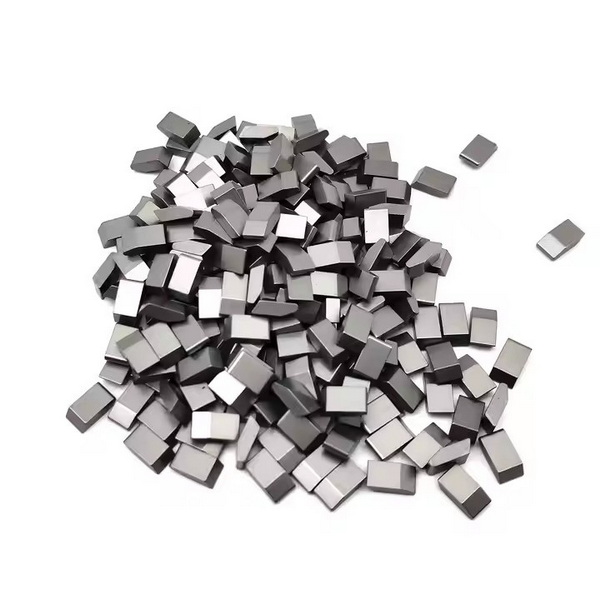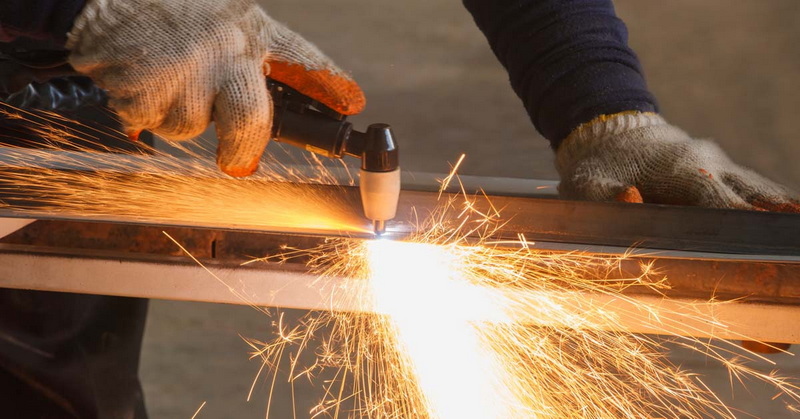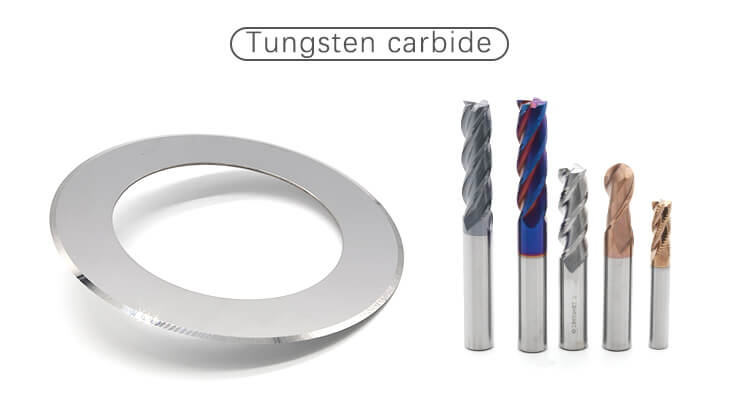Content Menu
● Introduction to Tungsten Carbide
● Machining Techniques for Tungsten Carbide
>> 1. CNC Turning
>> 2. Grinding
>> 3. Electrical Discharge Machining (EDM)
>> 4. Laser Cutting
● Safety Precautions
● Tools and Equipment
>> 1. Diamond Saw Blades
>> 2. Carbide-Tipped Tools
>> 3. Dremel Tool with Carbide Wheel
● Best Practices for Cutting Tungsten Carbide on a Lathe
● Advanced Techniques for Complex Shapes
● Material Selection and Preparation
● Troubleshooting Common Issues
● Conclusion
● Frequently Asked Questions
>> 1. What are the common methods for cutting tungsten carbide?
>> 2. How do you prevent overheating during cutting?
>> 3. What safety equipment is necessary when cutting tungsten carbide?
>> 4. What tools are best for precision cutting of tungsten carbide?
>> 5. Why is EDM preferred for complex shapes in tungsten carbide?
● Citations:
Cutting tungsten carbide on a lathe is a challenging task due to its extreme hardness and brittleness. Tungsten carbide is widely used in cutting tools, wear parts, and other applications where high wear resistance is required. However, its hardness, which ranges from 8.5 to 9.5 on the Mohs scale, makes it difficult to machine using conventional methods. In this article, we will explore the techniques and tools necessary for cutting tungsten carbide on a lathe, along with safety precautions and best practices.

Introduction to Tungsten Carbide
Tungsten carbide is a composite material made from tungsten carbide particles bonded together by a metallic matrix, typically cobalt. Its high hardness and wear resistance make it ideal for cutting tools, but these same properties also make it difficult to machine. When working with tungsten carbide, it is essential to use specialized tools and techniques to avoid damaging the material or the machine.
Machining Techniques for Tungsten Carbide
Machining tungsten carbide requires careful selection of techniques and tools. Here are some common methods used for cutting and shaping tungsten carbide:
1. CNC Turning
CNC turning is a precise method for creating curved profiles or R-chamfers on tungsten carbide parts. This technique uses computer-controlled machines to ensure accuracy and consistency. However, due to the brittleness of tungsten carbide, it is crucial to use carbide tools and carefully adjust the cutting parameters such as speed, feed rate, and depth to avoid material fracture.
2. Grinding
Grinding is a common precision machining method for tungsten carbide, especially when high accuracy and surface finish are required. It includes surface, external, and internal grinding. Proper abrasives and tools selection is critical, along with controlling grinding speed, depth, and coolant usage. Diamond-coated wheels are often used for grinding tungsten carbide due to their ability to wear away the material gradually.
3. Electrical Discharge Machining (EDM)
EDM is a non-traditional machining method that uses electrical discharges to erode the material. It is particularly useful for creating complex shapes or irregular holes without applying mechanical stress, which can cause cracking in tungsten carbide. EDM is ideal for machining hard-to-machine materials like tungsten carbide.
4. Laser Cutting
Laser cutting is another advanced method for cutting tungsten carbide, offering high precision and minimal material waste. It uses a focused laser beam to melt and vaporize the material, allowing for intricate cuts and designs. However, laser cutting requires precise control over the laser parameters to avoid overheating or thermal damage.
Safety Precautions
When cutting tungsten carbide, safety is paramount due to the risk of flying particles and hazardous dust. Essential safety gear includes:
- Safety Glasses: To protect eyes from flying debris.
- Gloves: To prevent cuts and abrasions.
- Dust Mask: To avoid inhaling fine particles generated during cutting.
Tools and Equipment
1. Diamond Saw Blades
Diamond saw blades are used for cutting tungsten carbide rods. These blades utilize high-hardness diamond particles to effectively cut through the material. Cooling the blade during cutting is crucial to prevent overheating and maintain tool integrity.
2. Carbide-Tipped Tools
Carbide-tipped tools are essential for turning and milling operations on a lathe. These tools are designed to withstand the hardness of tungsten carbide and require precise adjustments in cutting parameters to avoid material fracture.
3. Dremel Tool with Carbide Wheel
For small-scale or intricate tasks, a Dremel tool equipped with a carbide wheel is highly effective. This setup provides the necessary control for precision cutting and fine adjustments.
Best Practices for Cutting Tungsten Carbide on a Lathe
1. Secure the Workpiece: Use a vise or clamp to ensure stability during cutting to prevent movement that could lead to inaccurate cuts or damage to the rod.
2. Mark the Cutting Area: Use a high-quality marker to accurately mark the cutting area, ensuring precision.
3. Cooling: Use a coolant system to dissipate heat and reduce thermal stress on the rod.
4. Tool Selection: Choose the right tools, such as diamond saw blades or carbide-tipped tools, based on the specific cutting requirements.

Advanced Techniques for Complex Shapes
For complex shapes or designs, techniques like EDM and laser cutting are preferred due to their precision and ability to handle intricate details without mechanical stress. These methods allow for the creation of complex geometries that would be difficult or impossible to achieve with traditional machining techniques.
Material Selection and Preparation
Before cutting, it is essential to select the appropriate grade of tungsten carbide based on the application requirements. Different grades offer varying levels of hardness and toughness, which can affect the machining process. Additionally, ensuring the material is free from defects and properly prepared can significantly improve the cutting efficiency and quality.
Troubleshooting Common Issues
During the cutting process, several issues may arise, such as tool wear, material cracking, or overheating. Addressing these issues promptly involves adjusting cutting parameters, inspecting tool condition, and ensuring proper cooling. Regular maintenance of the machine and tools is also crucial to prevent downtime and ensure consistent quality.
Conclusion
Cutting tungsten carbide on a lathe requires specialized techniques and tools due to its extreme hardness and brittleness. Techniques such as CNC turning, grinding, EDM, and laser cutting are commonly used, along with specialized tools like diamond saw blades and carbide-tipped tools. Safety precautions and proper tool handling are crucial to ensure a safe and efficient cutting process.

Frequently Asked Questions
1. What are the common methods for cutting tungsten carbide?
Common methods include using diamond saw blades, wire cutting, and laser cutting. Each method is chosen based on the specific requirements of the cut, such as precision and complexity.
2. How do you prevent overheating during cutting?
Preventing overheating is crucial to maintain tool integrity and prevent damage to the tungsten carbide. This can be achieved by using a coolant system, such as clean water or a specialized coolant, to dissipate heat during the cutting process.
3. What safety equipment is necessary when cutting tungsten carbide?
Essential safety gear includes safety glasses to protect against flying debris, gloves to prevent cuts and abrasions, and a dust mask to avoid inhaling fine particles generated during cutting.
4. What tools are best for precision cutting of tungsten carbide?
For precision cutting, tools like diamond saw blades and carbide-tipped tools are recommended. These tools are designed to handle the hardness of tungsten carbide and provide the necessary precision.
5. Why is EDM preferred for complex shapes in tungsten carbide?
EDM is preferred for complex shapes because it uses electrical discharges to erode the material, allowing for precise control over the cutting process without applying mechanical stress, which can cause cracking in tungsten carbide.
Citations:
[1] https://www.carbide-part.com/blog/how-to-machine-tungsten-carbide/
[2] https://www.carbide-products.com/blog/how-to-machine-tungsten-carbide/
[3] https://www.cnblogs.com/luohenyueji/p/16990846.html
[4] https://shop.machinemfg.com/how-to-cut-tungsten-carbide-rods-an-overview/
[5] https://www.carbide-part.com/blog/how-to-cut-carbide/
[6] https://blog.csdn.net/qq_34917728/article/details/125122327
[7] https://www.youtube.com/watch?v=RrttP9OfOH4
[8] https://www.7leaders.com/blog/tungsten-carbide
















